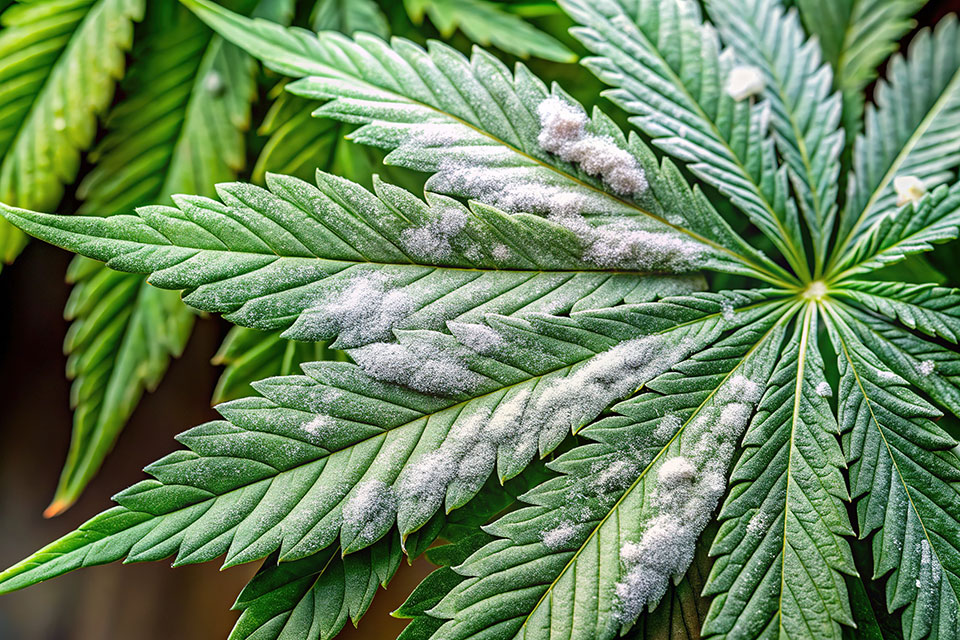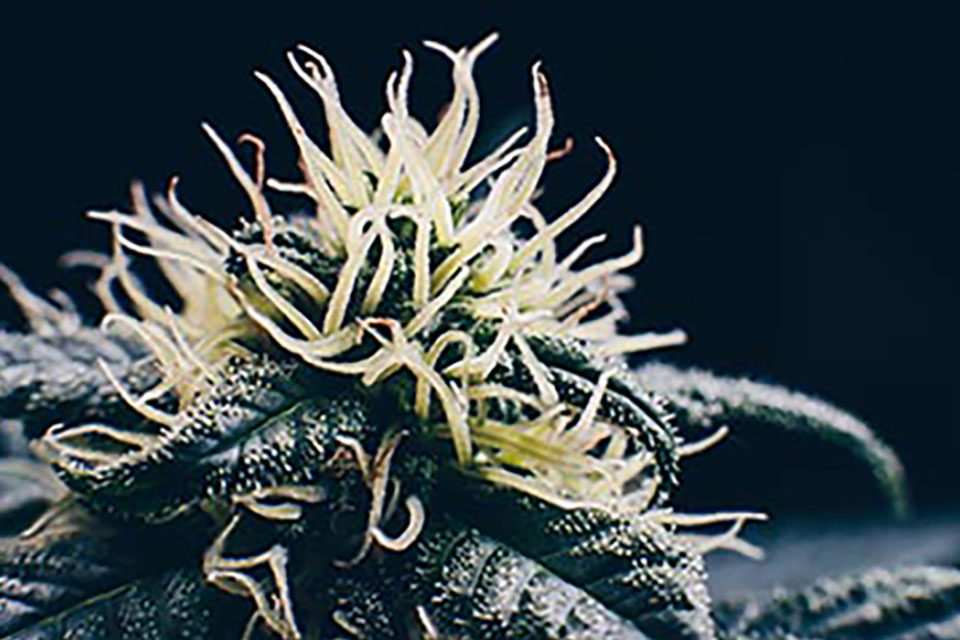
Pathogenic mold is one of the most pressing challenges for cannabis growers, particularly for those new or intermediate in the industry. In the USA and Canada, where growing conditions can vary dramatically, growers must recognize and promptly address mold problems. If left unchecked, pathogenic molds can decimate entire crops, diminishing yield and quality. Learn to identify the signs of pathogenic mold and understand how to treat and prevent it effectively.
Understanding Pathogenic Mold in Cannabis
Pathogenic molds are fungi that can seriously harm cannabis plants, leading to lower yields and poor plant health. These molds thrive in humid environments with inadequate airflow, making them a frequent challenge in cannabis cultivation. The damage they cause can be extensive, from stunted growth and leaf discoloration to the potential loss of entire crops.
Two common molds that affect cannabis are powdery mildew and botrytis, also known as gray mold. Powdery mildew appears as a white, powdery layer on leaves and stems and can spread quickly if not managed. It weakens plants by interfering with their ability to photosynthesize. Botrytis is identified by its grayish-brown spores, which often target buds, causing internal rot. This mold is particularly harmful during the flowering stage, when buds are most susceptible.
How to Identify Pathogenic Mold
Identify and treat pathogenic mold early to manage it effectively and protect your crops. Start by examining your plants closely. Powdery mildew appears as white, powdery spots on leaves and stems, while botrytis shows up as grayish-brown spores on buds. Mold can also cause leaves to wilt, curl, or develop yellow spots, signaling trouble.
Environmental factors are crucial in mold development. High humidity, especially above 60%, and stagnant air create perfect conditions for mold. Poor ventilation and overcrowded plants worsen things, increasing the risk of mold outbreaks. By keeping an eye on these conditions, you can catch potential mold issues before they become visible.
Acting quickly is essential. The earlier you detect mold, the more treatment options you have. Regular checks, particularly during flowering, can help catch mold before it spreads. Tools like magnifying lenses can reveal early signs you might miss otherwise. Staying alert helps protect your plants and ensures a healthier harvest.
Effective Treatment Methods for Pathogenic Mold
Once pathogenic mold is identified, immediate action is required to contain and eliminate it. Several treatment methods, both organic and chemical, are available, each suited to different levels of mold severity.
Organic treatments are popular for their eco-friendly nature. They use natural ingredients that are safer for both the plants and the environment, making them ideal for personal growers. Chemical treatments, while potent, demand careful use to avoid harming your plants or the surrounding area.
Start by isolating any infected plants to stop the mold from spreading. Whether you’re using a spray or another method, follow the instructions on treatment products closely. Always wear protective gear like gloves and masks to reduce exposure to harmful substances.
The key is to apply the treatment method correctly and consistently. Multiple applications might be necessary to eliminate the mold. Keep a close eye on treated plants to see how well the treatment works and decide if further action is needed.
Organic Treatment Options
Organic methods offer a safe and environmentally friendly approach for those looking to manage mold naturally. Neem oil is a favorite among growers for its antifungal properties. To apply, mix neem oil with water and a bit of mild soap, then spray it directly on the mold-affected areas. Another effective remedy is a baking soda spray. Combining a tablespoon of baking soda with a gallon of water creates a solution that changes the pH on the plant’s surface, making it less inviting for mold. Regular use can help control existing mold and prevent new outbreaks.
Chemical Treatment Solutions
Chemical fungicides may be necessary for severe mold infestations. These treatments are potent and can quickly eradicate mold, but they require careful handling to avoid harming the plants or creating chemical residues. Some common chemical fungicides used in cannabis cultivation include:
- Myclobutanil: A systemic fungicide, which is absorbed by the plant and can target mold from the inside out.
- Chlorothalonil: A broad-spectrum fungicide that helps to kill mold on contact.
Always follow the manufacturer’s instructions when using chemical treatments and apply the fungicide in the recommended quantities. Use proper protective equipment, such as gloves and masks, when handling these products to minimize exposure to potentially harmful substances. Be aware of local regulations regarding chemical use and ensure that your growing area is well-ventilated during and after application.
Preventing Pathogenic Mold in Cannabis Cultivation
Prevention is the most effective defense against mold. Start by optimizing your growing conditions. Keep humidity below 60% and ensure proper air circulation with fans and ventilation systems. Temperature control is crucial, too. Aim for a range between 70-85°F to discourage mold growth. Regular pruning helps improve airflow and reduce overcrowding, which can trap moisture and encourage mold.
Implement a routine monitoring schedule to catch mold early. Adjust environmental conditions as needed and consider using preventative sprays with potassium bicarbonate to create an environment hostile to mold spores.
Identifying and Treating Mold for a Stellar Cannabis Harvest
Timely identification and treatment of pathogenic mold are essential for a healthy cannabis crop. By recognizing the signs and understanding the environmental factors that promote mold, growers can take proactive measures to protect their plants. Combining prevention strategies with effective treatments ensures a strong harvest and top-quality cannabis. Consistent implementation of these practices fosters a mold-free environment, enhancing the overall success of cultivation efforts.



